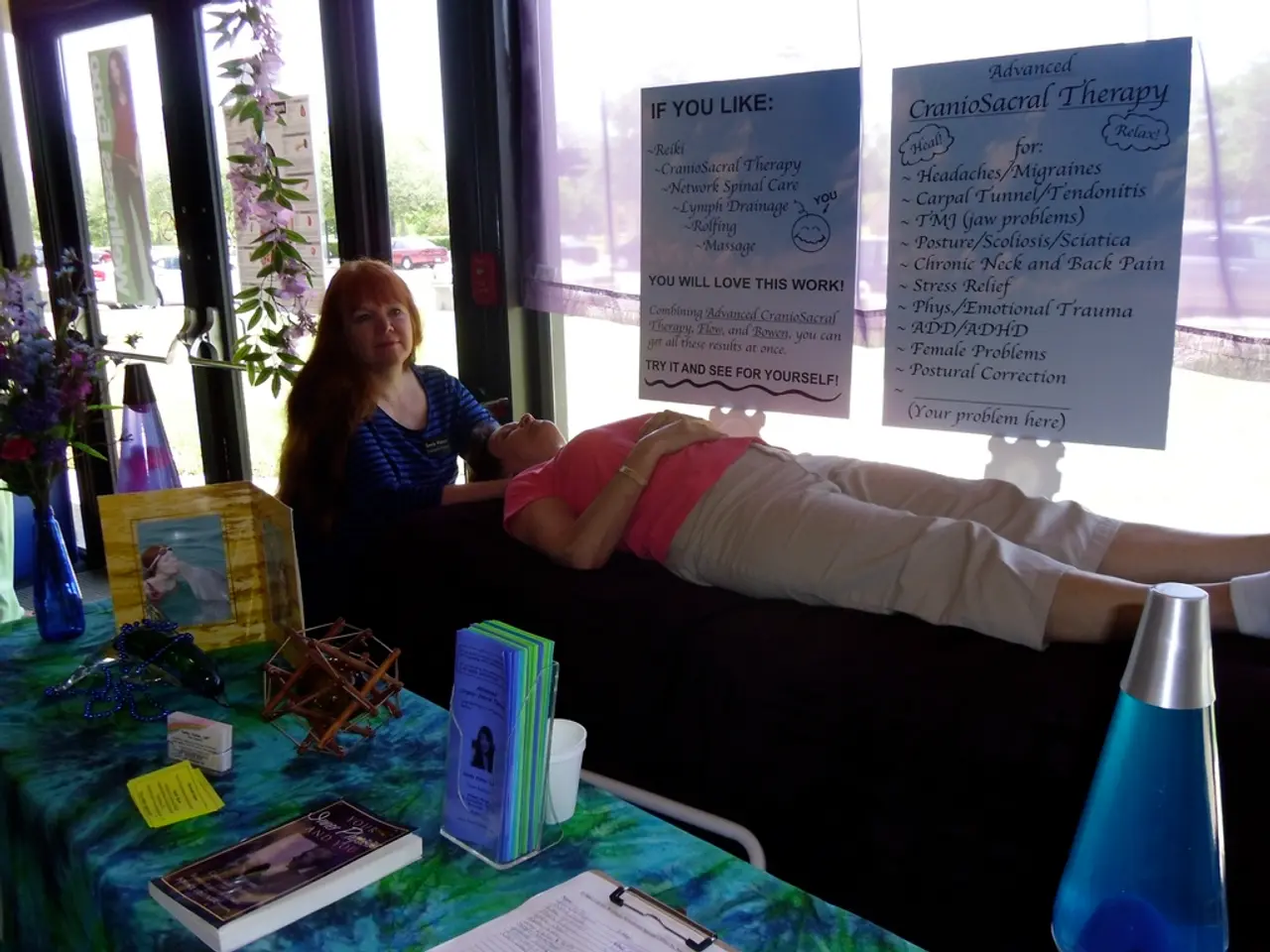Disorders Related to Anxiety: Signs, Classes, and Remedies
Anxiety disorders are a common mental health condition in the United States, affecting nearly one-third of U.S. adults during their lifetimes. These disorders are characterized by strong feelings of fear or worry that interfere with well-being and daily functioning.
The most common types of anxiety disorders include Generalized Anxiety Disorder (GAD), Panic Disorder, Social Anxiety Disorder, Specific Phobias, Post-Traumatic Stress Disorder (PTSD), Obsessive-Compulsive Disorder (OCD), and Agoraphobia. For instance, Social Anxiety Disorder affects around 15 million adults, and GAD affects at least 6.8 million U.S. adults. Specific Phobias are the most common anxiety disorders in the United States, affecting 8.7% of the population.
Symptoms of anxiety disorders vary, but they may include racing thoughts, shortness of breath, rapid heart rate, upset stomach, dry mouth, dizziness, feelings of dread or panic, sweating, tunnel vision, restlessness, muscle tension, physical weakness, poor memory, confusion, trouble concentrating, constant worry, dissociation, and more.
Cognitive behavioral therapy (CBT) and other behavioral therapies are effective for many people with anxiety disorders. Relaxation methods such as deep breathing exercises, mindfulness meditation, and exercise can help manage anxiety symptoms. For certain anxiety disorders, like phobias, Exposure Response Prevention (ERP) therapy can be helpful.
Medications are also used to manage anxiety symptoms. The most common types of medications taken for anxiety disorders include anti-anxiety drugs, antidepressants, and beta-blockers. However, it's important to note that anxiety medications don't cure anxiety but can provide relief from symptoms. Benzodiazepines, like Xanax and Ativan, are a common class of anti-anxiety medication, but they have a black box warning from the FDA and may cause physical dependence or withdrawal.
Treatment for anxiety disorders often consists of psychotherapy (talk therapy) and medication, if necessary. Peer support for anxiety disorders can be found through online communities or in-person meetings. Resources for finding help with anxiety include the National Alliance on Mental Illness (NAMI), Mental Health America, and SAMHSA's National Helifine.
If you or someone you know is considering suicide, help is available 24/7 through the National Suicide Prevention Lifeline (800-273-8255) and Crisis Textline (text "HOME" to 741741). It's crucial to remember that seeking help is a sign of strength, not weakness.
Anxiety disorders can be complex and may be caused by a combination of environmental and genetic factors. Risk factors may include exposure to stressful events, a family history of anxiety or other mental health conditions, certain physical health conditions, shyness in childhood, and belonging to communities that face discrimination.
It's encouraging to note that approximately 36.9% of people with anxiety disorders receive treatment. However, it's essential to continue raising awareness and providing resources to help those struggling with anxiety disorders. With the right support and treatment, it's possible to manage and overcome anxiety disorders.
Read also:
- Peptide YY (PYY): Exploring its Role in Appetite Suppression, Intestinal Health, and Cognitive Links
- Toddler Health: Rotavirus Signs, Origins, and Potential Complications
- Digestive issues and heart discomfort: Root causes and associated health conditions
- House Infernos: Deadly Hazards Surpassing the Flames








